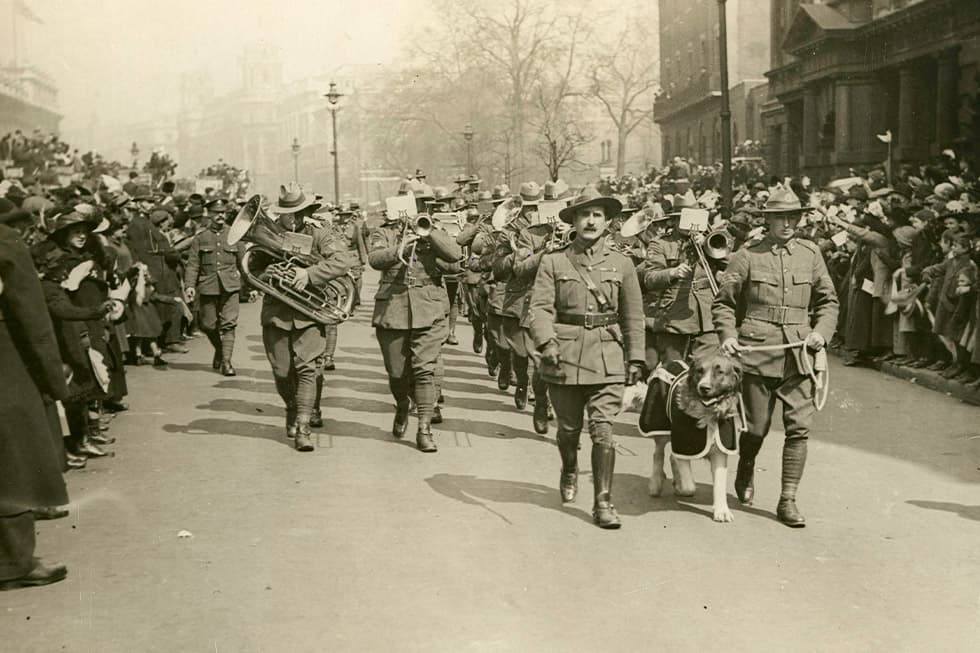ANZAC Day: Remembering the Four-Legged Soldiers & Canine Heroes of War

ANZAC Day: Remembering the Four-Legged Soldiers & Canine Heroes of War
ANZAC Day is a deeply ingrained day of remembrance for all Australians, a moment when we stand still to honour the incredible sacrifices of those who have served our country. As we reflect on the courage of our soldiers, it's worth pausing to also remember the companions who stood by their side: the four-legged heroes who played a massive role in military efforts.
Pet care experts like Nadia Crighton often highlight a side of history we don't always consider. The contribution of dogs during times of conflict is honestly astounding. "The invaluable role that dogs have played in times of conflict is truly remarkable," she's noted. Think about it—these animals went through specialized training, offered priceless comfort, and showed unshakable loyalty to soldiers in some of the most harrowing conditions imaginable. Their impact is simply too big to ignore.
This legacy of canine service isn't new; it stretches way back to World War I but really came into the spotlight during World War II. Who could forget the stories of heroes like Sergeant Stubby of the 102nd Infantry? This little dog was a legend, sniffing out injured soldiers on the battlefield, detecting gas attacks before humans could, and alerting his troops to nearby dangers. His bravery really set the precedent for how we recognize military dogs today.
And in the middle of all that chaos, can you imagine the comfort a dog provided? "Amid the chaos of war, the presence of a dog provided a beacon of solace for many soldiers," Crighton points out. It boils down to that simple, powerful bond of unconditional love that dogs give so freely. That connection gave soldiers a much-needed dose of strength and resilience when they needed it most.
The historical numbers are mind-boggling. By 1918, Germany had reportedly deployed around 30,000 dogs in the war effort, with Britain using up to 20,000. It wasn't just one or two breeds, either. They used a whole range of dogs for different jobs, from sentry duty to running messages. Dobermanns, German Shepherds, Airedale Terriers, and Bloodhounds were some of the most common breeds on the front lines.
So many of these brave animals saved countless human lives and were there to comfort dying soldiers in their final moments. As we honour the fallen this ANZAC Day, it's only right that we also remember the massive contributions of our loyal canine friends and the incredible jobs they still do for our military today.
War Dogs of WWI & WWII: The Unsung Heroes
First Responders with Fur
These were the casualty dogs. Can you picture it? These brave dogs would carry medical supplies strapped to their backs, weaving through battlefields to reach wounded soldiers. They were also known to stay with soldiers who were beyond help, offering quiet companionship in their last moments. The Red Cross famously trained Bloodhounds and Airedale Terriers for this critical job of locating the injured.
The Ultimate Watchdogs
Sentry dogs were the ears of the front line. Trained to give a low, almost silent growl to alert their handler to strangers or suspicious movement, these dogs, often Dobermanns, were an essential line of defense. They provided a layer of protection that human senses just couldn't match.
Four-Legged Couriers
When communication lines were down—a common problem in the trenches—messenger dogs became absolutely vital. They were tasked with the perilous job of carrying critical messages across dangerous, active battlefields. Their speed and small size made them a much harder target than a human runner.
The formal training for these roles really took off with the creation of the British War Dog School in 1917. This school established official training programs that set the standards for military dogs, many of which have influenced how canine service members are trained even now.
Shifting gears to our modern era, the work continues. "In modern times, dogs serve in diverse roles, from bomb detection to tracking," Crighton explains. Australian Military working dogs are seen as indispensable assets. They provide specialized detection skills, give our troops an early warning of danger, and offer protection in operations all around the world.
So, as we commemorate ANZAC Day, let's raise a thought to the unwavering loyalty, incredible courage, and dedicated service of these amazing canine companions. Their contributions to our military, both past and present, deserve to be remembered forever.